Related Industry Knowledge
What aspects do non-standard fasteners usually include
Jul 29, 2022 View: 1372
There are many types of non-standard product specifications, various packaging methods, variable process requirements, large price fluctuations of disk units, high mold development costs, long cycle, and low industry profits. How to quickly and accurately estimate product prices, ensure reasonable profits, and seize market opportunities is the focus of business.
So what do our non-standard fasteners usually contain? Today we will introduce it to you in detail.
1. Bolt: A type of fastener consisting of a head and a screw, which needs to be matched with a nut to fasten and connect two parts with through holes. This form of connection is called a bolted connection. If the nut is unscrewed from the bolt, the two parts can be separated, so the bolt connection is a detachable connection.
2. Stud: a type of fastener without a head, only with external threads on both ends. When connecting, one end of it must be screwed into the part with the internal threaded hole, the other end must pass through the part with the through hole, and then screw the nut, even if the two parts are tightly connected as a whole. This form of connection is called a stud connection, which is also a detachable connection. It is mainly used for occasions where one of the connected parts is thick, requires a compact structure, or is not suitable for bolt connection due to frequent disassembly.
3. Screws: It is also a type of fastener composed of two parts: the head and the screw. It can be divided into three categories according to the purpose: machine screws, set screws and special-purpose screws. Machine screws are mainly used for a tight connection between a part with a threaded hole and a part with a through hole, without the need for a nut fit. Set screws are mainly used to fix the relative position between two parts. Special purpose screws, such as eyebolts, are used for hoisting parts.
4. Nut: with internal threaded holes, the shape is generally flat hexagonal cylindrical shape, but also flat square cylindrical or flat cylindrical shape, with bolts, studs or machine screws, used to fasten and connect two parts, so that become a whole.
5. Self-tapping screw: similar to machine screw, but the thread on the screw is a special self-tapping screw thread. It is used to fasten and connect two thin metal components to make them a whole. Small holes need to be made in advance on the components. Due to the high hardness of this kind of screw, it can be directly screwed into the hole of the component, so that the Forms a responsive internal thread. This form of connection is also a detachable connection.
6. Wood screw: It is also similar to machine screw, but the thread on the screw is a special rib for wood screw, which can be directly screwed into the wooden component to connect a metal (or non-metal) part with a through hole with a wooden screw. The components are fastened together. This connection is also a detachable connection.
7. Washers: a type of fastener with an oblate ring shape. It is placed between the supporting surface of the bolt, screw or nut and the surface of the connecting parts, which increases the contact surface area of the connected parts, reduces the pressure per unit area and protects the surface of the connected parts from damage; another type of elastic washer, It can also play a role in preventing the nut from loosening.
8. Retaining ring: It is installed in the shaft groove or hole groove of the machine and equipment, and plays the role of preventing the parts on the shaft or the hole from moving left and right.
9. Pins: mainly used for parts positioning, and some can also be used to connect parts, fix parts, transmit power or lock other fasteners.
10. Rivets: a type of fastener composed of a head and a nail rod, used to fasten and connect two parts with through holes to make them a whole. This form of connection is called rivet connection, or riveting for short. It belongs to the non-detachable connection. Because to separate the two parts that are joined together, the rivets on the parts must be broken.
11. Assemblies and connection pairs: Assemblies refer to a type of fasteners supplied in combination, such as a combination of a certain machine screw (or bolt, self-supplied screw) and a flat washer (or spring washer, lock washer); connection Auxiliary refers to a type of fasteners supplied by a combination of special bolts, nuts and washers, such as high-strength hexagon head bolts for steel structures.
www.junlygroup.com
You Might Also Like
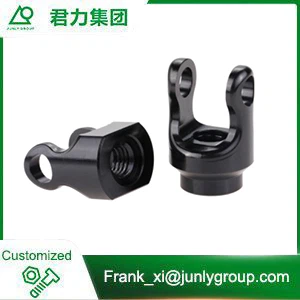
Aluminum Alloy CNC Machining Parts For Medical Devices
Learn More
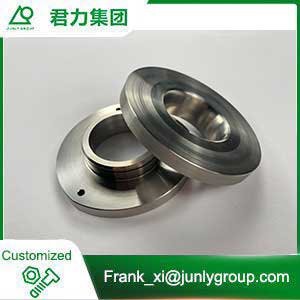
Flange Accessories
Learn More
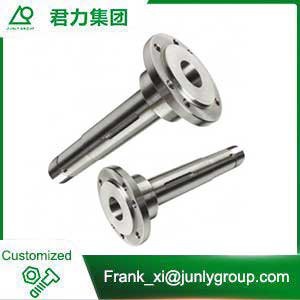
Stainless Steel Machined Parts
Learn More
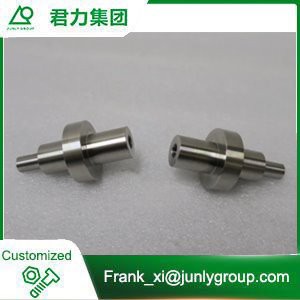
High Precision CNC Machined Lathe Medical Part
Learn More
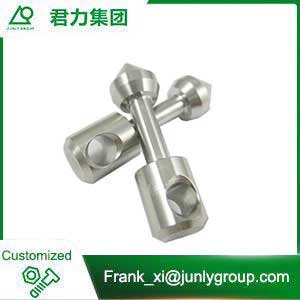
Precision Machined Parts
Learn More
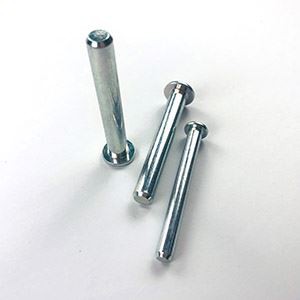
Hex Socket Button Head Screws
Learn More
Send Inquiry
Copyright © SIP Junly Industrial Precision Co., Ltd. All Rights Reserved.